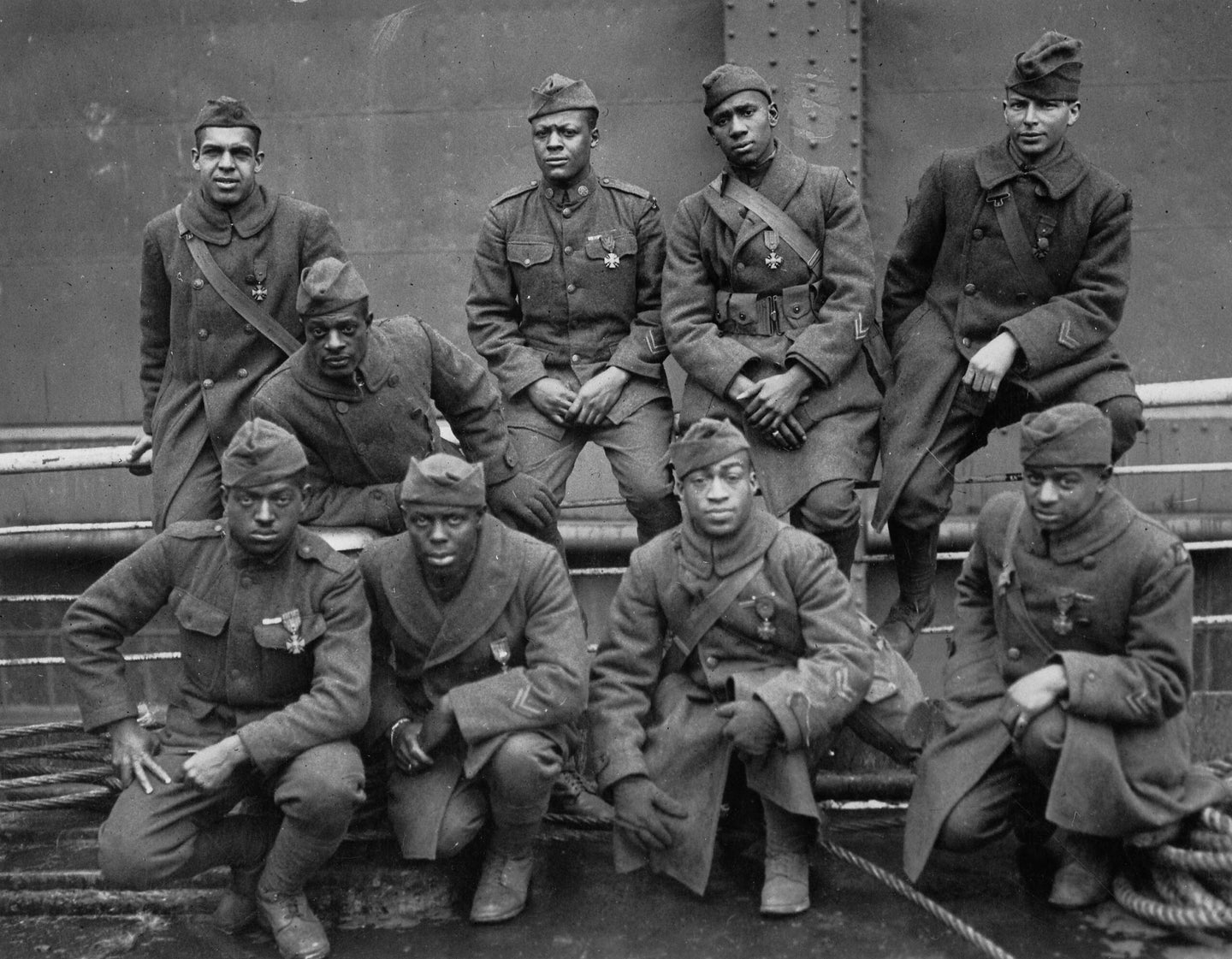More than a century after World War I, the Harlem Hellfighters’ nickname is finally official
“That was such a glaring error."

The U.S. Army has given the official go-ahead for a National Guard unit to bear a name its forebears earned in the trenches of World War I: the Harlem Hellfighters.
The Army Center of Military History approved the “Harlem Hellfighters” as the official designation for the 369th Sustainment Brigade of the New York Army National Guard on Sept. 21, 2020, according to a Guard press release.
The quest to make the moniker official began in 2019 at the New York State Military Museum, when Courtney Burns, the museum director, was looking through the Army’s list of unit special designations and found that, despite the name’s widespread use, it did not appear on official records.
“That was such a glaring error,” he said.
The realization set Burns on a mission to see the name officially bestowed to the unit, and so he contacted Seth Morgulas, the commander of the 369th Sustainment Brigade — the modern-day successors to World War I’s Harlem Hellfighters — to let him know that the name was not officially recognized, despite its widespread use.
“I said, “That is crazy, how does it not have it, ’ Morgulas recalled.

The 369th Sustainment Brigade is descended from the 369th Infantry Regiment, which was originally known as the 15th Infantry Regiment. The unit’s legacy was forged during an era of legalized racism, and its soldiers’ heroism and endurance in the face of violence on a scale never-before-seen, ensured that the reputation of the Harlem Hellfighters endured for generations — and now, its name does, too.
In 1917, at the outset of America’s involvement in World War I, Black Americans traveled to New York to volunteer to serve in the all-Black 15th Infantry Regiment, which was based out of Harlem, New York.
Even after shipping out to Europe, the 15th Regiment’s wartime service was defined by race: Newly arrived at the Western Front in 1917, the Regiment was placed on work details, unloading supplies, and doing manual labor; its soldiers were given second-hand, sometimes barely functioning, equipment, and many Black soldiers were greeted with hostility and distrust by their white peers.
But with new fronts opening up, and combat taking its toll, the 15th Infantry Regiment was renamed the 369th Infantry Regiment and placed under command of the French Army.
There on the Western Front, wearing French uniforms and firing French rifles, the Hellfighters took orders from French commanders, lived alongside French soldiers, and fought bravely during 191 consecutive days in combat. The men of the 369th endured enemy fire, mustard gas, trench foot, and extreme hardship as they suffered more casualties than any other American unit during the war. Their service resulted in a slew of awards, from the French Croix de Guerre to multiple Distinguished Service Crosses, and, eventually, one of their own was posthumously awarded the Medal of Honor.
When they returned home, the men of the 369th were celebrated on the streets of New York, and headlines across the country applauded the service of the “Harlem Hellfighters.” And though the gratitude heaped upon them was short-lived, the name lingered, but it would be decades before it was formally bestowed to the unit.
And though it took more than a century, the Harlem Hellfighters are now, officially, the Harlem Hellfighters.
